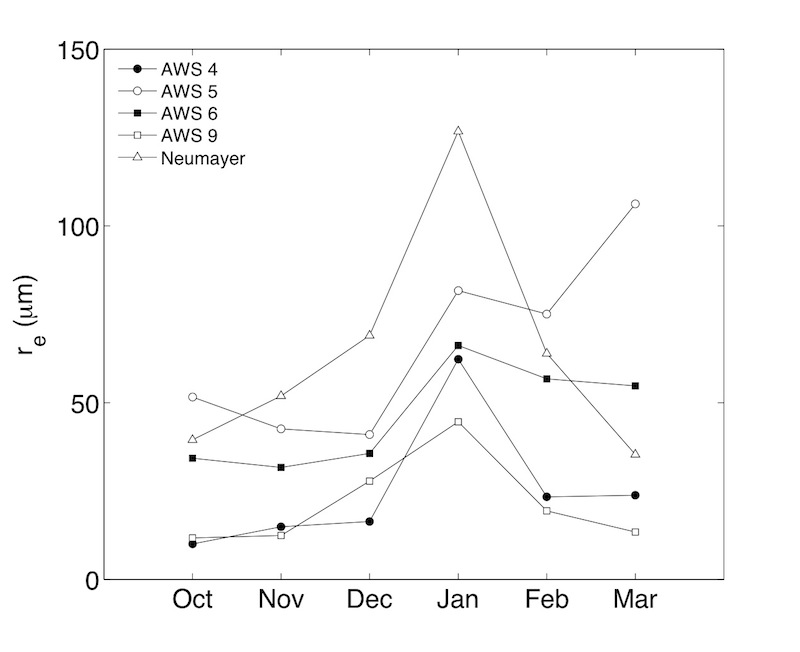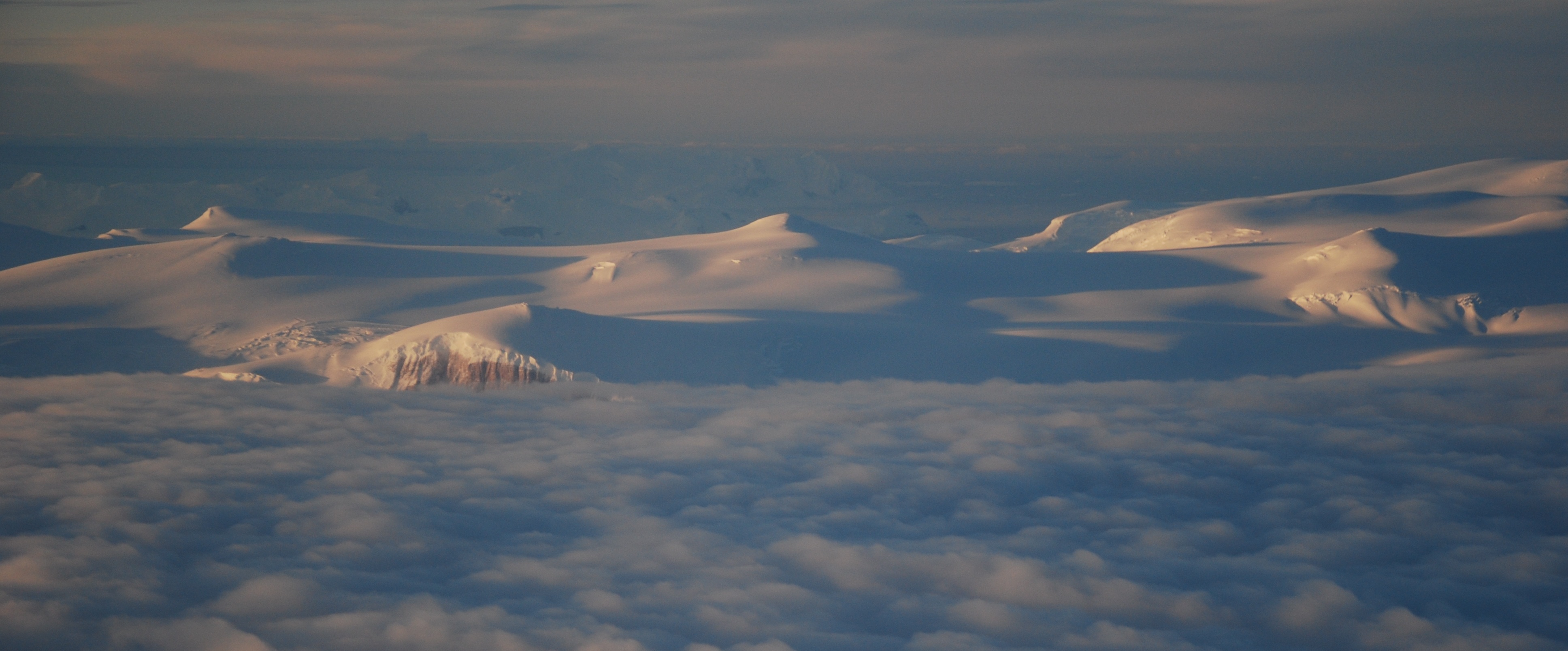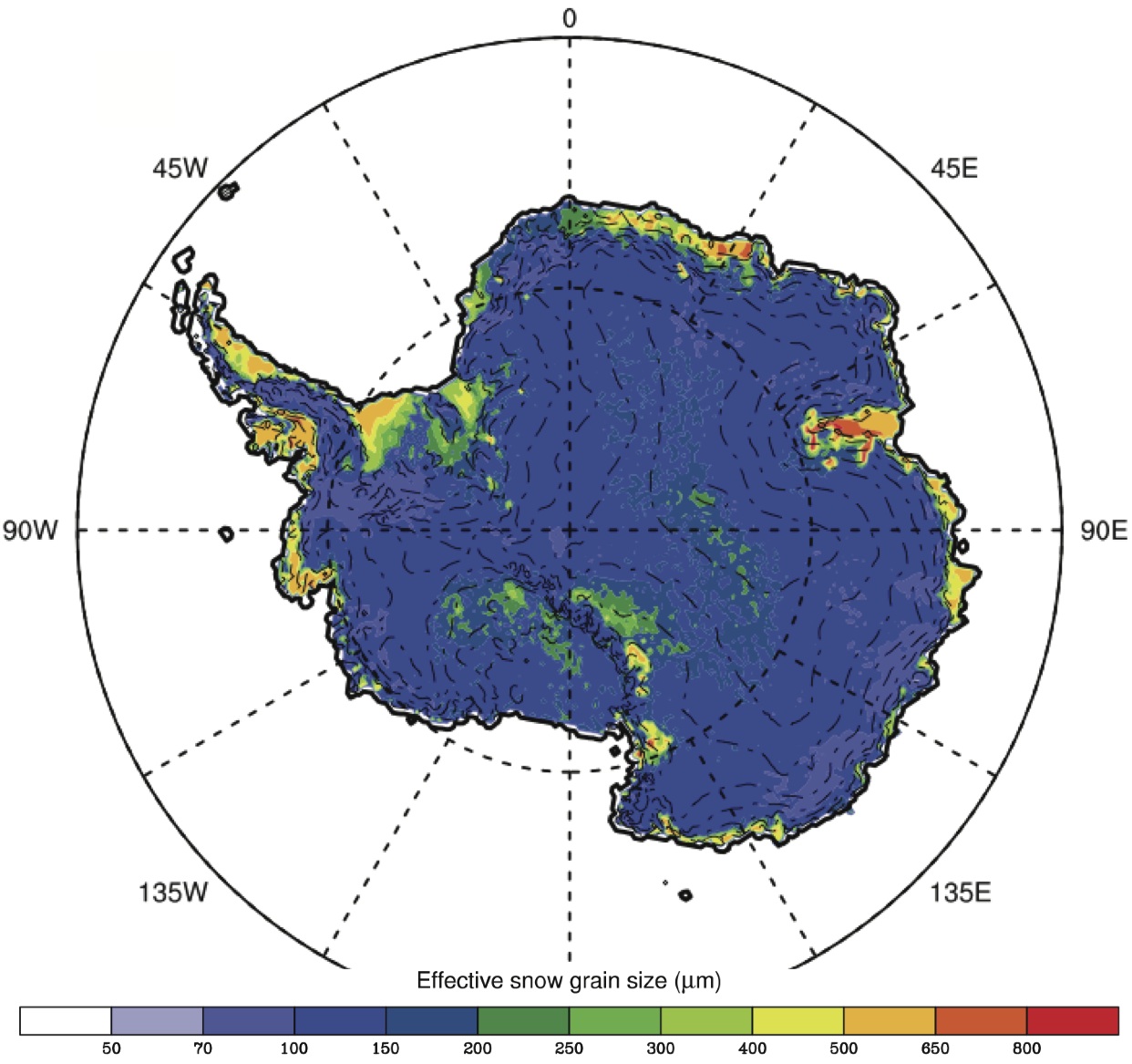Peter Kuipers Munneke
Assistant professor in Glaciology
About me

I am an assistant professor in the field of glaciology and polar meteorology at the Institute for Marine and Atmospheric research Utrecht (IMAU), part of Utrecht University, The Netherlands. I'm active on Mastodon.
Featured paper: Firn review paper
We study firn because it contains clues about past climate, because it modifies meltwater runoff into the ocean, and because it can help us to measure ice-sheet mass change from space using satellites. After a lot of hard work, an overview paper on firn is out!
Blue ice in Antarctica
Using a spectral unmixing technique, we map daily fractions of blue-ice area over Antarctica for the 22-year period since 2000, using the full available MODIS archive. This FABIAN product is published in Remote Sensing of Environment.
Albedo research
Why albedo matters
The albedo of a particular surface is defined as the fraction of incoming solar radiation that is reflected by that surface. Snow has a very high albedo, and therefore, small changes in snow albedo have a profound effect on the net radiation budget of the snow surface. To illustrate this idea, suppose a snow surface with an albedo of 0.85. Now if the albedo drops by only 0.05, the amount of absorbed solar radiation increases from 0.15 to 0.20, a rise of 33 per cent. Combining models and observations, we can dig deeper into the causes of albedo variability.
Variability of Antarctic albedo
Spatial variability in Antarctic snow albedo is caused mainly by variations in the average snow grain size (see graph below). The larger the snow grains at the surface, the lower the albedo. Other mechanisms, like variations of solar zenith angle or constitution of atmospheric gases, are less important. I reached this conclusion in a paper published in JGR, concurrently using multi-year radiation observations from automatic weather stations, and a sophisticated radiative transfer model.

Annual cycle of effective snow grain size at five locations in Dronning Maud Land, Antarctica, derived from observations and radiative transfer modelling.
Radiation in the snowpack
Radiation that penetrates into the snowpack is partly absorbed below the surface, and will lead to a more rapid warming of the snow than when assuming that all radiation is absorbed at the surface. Using results from the Summit Radiation Experiment (SURE 07) and an energy balance model of the snowpack, we have quantified the role of radiation penetration in the thermodynamics of the snow in a paper that appeared in The Cryosphere in 2009.
Clouds over snow and ice surfaces
It is possible to obtain information on cloud optical thickness and longwave optical properties simultaneously from radiation measurements over snow and ice surfaces. Since both long- and shortwave properties correlate well, one quantity can be obtained when the other is missing. Or, cloud optical thickness can be computed in the absence of solar radiation itself, for example in polar winter nights. This research was published in the International Journal of Climatology.

Complex radiation field over snow in the presence of clouds.
Spectral snow albedo
During the Summit Radiation Experiment (SURE 07), we simultaneously measured spectral snow albedo and vertical profiles of snow grain size. It turns out that radiative transfer calculations agree well with observed spectral albedo curves when the observed snow grain size profiles are prescribed. It is important to correctly take into account the smallest snow grains in the top millimeter of the snow pack as they strongly influence spectral albedo in the near-infrared part of the solar spectrum. This is the subject of chapter 7 of my PhD thesis.
Albedo parameterization
The regional atmospheric model RACMO2 has been extended with a sophisticated albedo scheme, based on prognostic snow grain size, cloud thickness, and solar elevation. RACMO2 has now been run over Antarctica and Greenland, with the new snow physics implemented. A manuscript has been published in the Journal of Geophysical Research, showing the large improvement in simulating albedo due to the new parameterization. This is crucial for correct estimations of the surface mass balance, including snowmelt.

RACMO2 snow grain size (micron) in January. The prognostic snow grain size in RACMO2 is the basis for its new albedo parameterization.
Publications
These are listed on my publications page.